
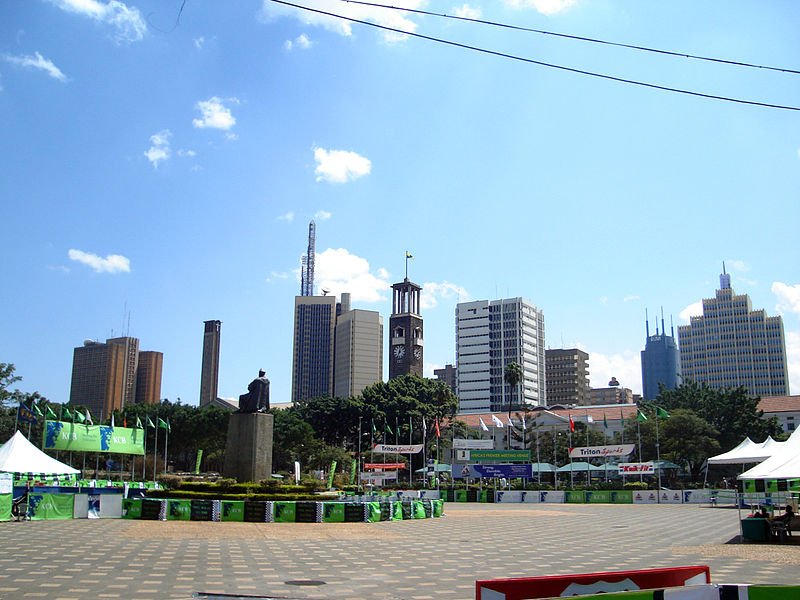 Downtown Nairobi, as viewed from the Kenyatta International Conference Centre
Downtown Nairobi, as viewed from the Kenyatta International Conference CentreSource: https://commons.wikimedia.org/wiki/File:A_view_of_Nairobi_from_the_Kenyatta_International_Conference_Centre.jpg
Author: Bobokine

Nairobi is the capital and most populous city in Kenya. It is located in the south-central part of the country within Nairobi County. The city got its name from the Maasai phrase Enkare Nyirobi, meaning "place of cool waters". Located at 1,661 m (5,450 ft) above sea level, Nairobi covers 696 sq km (268.7 sq mi) and has a population of 3.14 million people.
Nairobi is today the biggest city in East Africa. It is also one of the most important financial center for the region, home to the lion's share of Kenyan business head offices as well as numerous international companies and institutions. It has one of the largest stock exchanges in Africa as well as its second oldest.
Nairobi is located between Kampala and Mombasa, on the eastern edge of the Rift Valley. Due to the geological feature of the valley, Nairobi does experience minor earthquakes and tremors from time to time. Nairobi County is drained by the Nairobi River and its tributaries before joining the Athi River which flows into the Indian Ocean.
Due to its high elevation, Nairobi experiences a subtropical highland climate. The weather can be pleasantly cool the whole year round. Warmest month is January, when the average high temperature reaches 24.5°C (76.1°F). Coldest month is July, when average low temperature drops to 10.1°C (50.2°F). April receives the heaviest rains, at 219.4 mm (8.638 in).
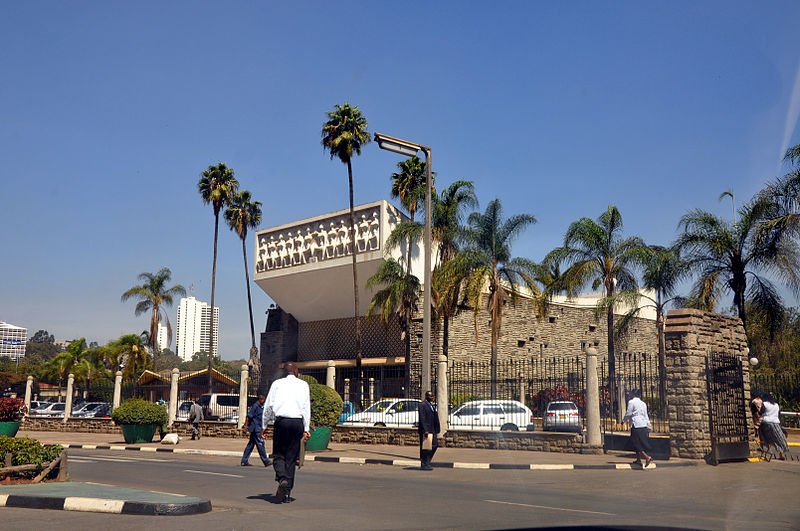 Parliament of Kenya, Nairobi
Parliament of Kenya, NairobiSource: https://commons.wikimedia.org/wiki/File:Parliament_Buildings,_Nairobi,_Kenya-21April2010.jpg
Author: Jorge Láscar

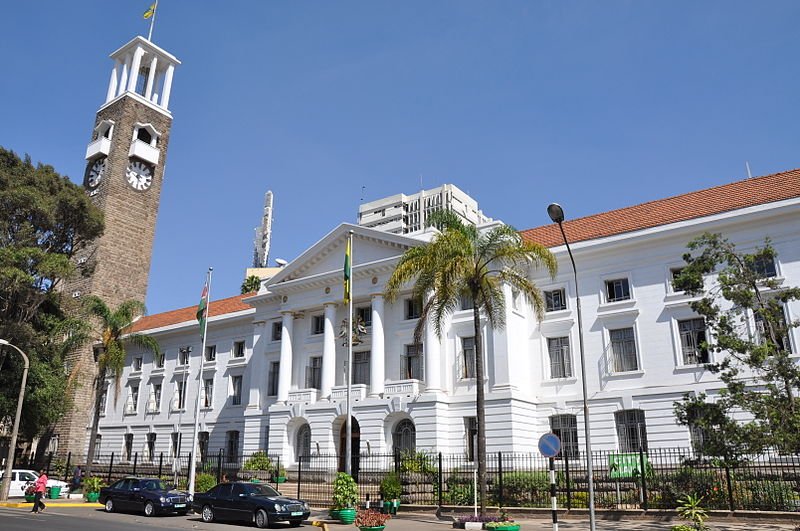 Nairobi City Hall
Nairobi City HallSource: https://commons.wikimedia.org/wiki/File:Nairobi_city_hall.jpg
Author: Jorge Láscar

Nairobi began as a railway supply depot for the Uganda Railway in 1899. Until then, the site was an uninhabited highland swamp. In the early part of the 20th century, a plague epidemic killed many in the area, and the original town had to be burned and start anew.
In 1905, Nairobi replaced Mombasa as the capital of the British protectorate. From there, it was on its way to becoming the main administrative center and tourist destination for East Africa. The growth of Nairobi was however resented by the local tribes, particularly the Maasai and Kikuyu people, who lost their traditional land to Nairobi. This unhappiness eventually manifested in the Mau Mau rebellion. Due to local pressure, the British eventually gave Kenya its independence in 1963, and Nairobi was made its capital.
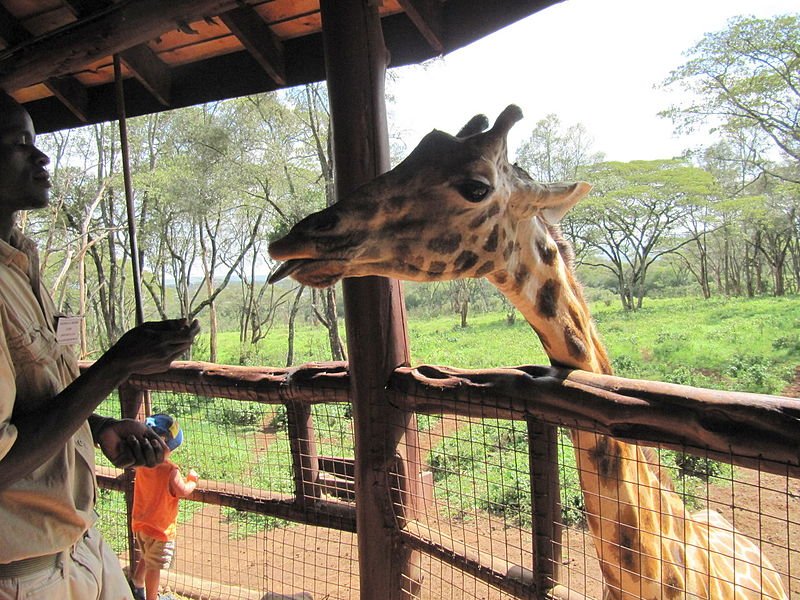 Feeding the Rothschild giraffe at the Giraffe Centre, Nairobi
Feeding the Rothschild giraffe at the Giraffe Centre, NairobiSource: https://commons.wikimedia.org/wiki/File:Giraffe_Centre_worker_feeding_giraffe.JPG
Author: Daryona

Since independence, Nairobi has grown rapidly to become one of the few developed cities in East Africa. However infrastructure development could not match the city's growth, resulting in power outages and dry taps becoming a common occurence.
Visiting Nairobi
Visitors from most countries arriving at Nairobi can get a visa upon arrival for US$50 single entry and $100 multiple entry. Jomo Kenyatta International Airport (NBO) is the main airport for Nairobi, located 15 km (9 mi) to the southeast of downtown.The main form of transport from the airport is a taxi. The fare is 1,500KSh to downtown Nairobi. Make sure you negotiate the fare before boarding, and make pre-book your accommodation before arriving, to avoid getting "recommendations" from the taxi driver.
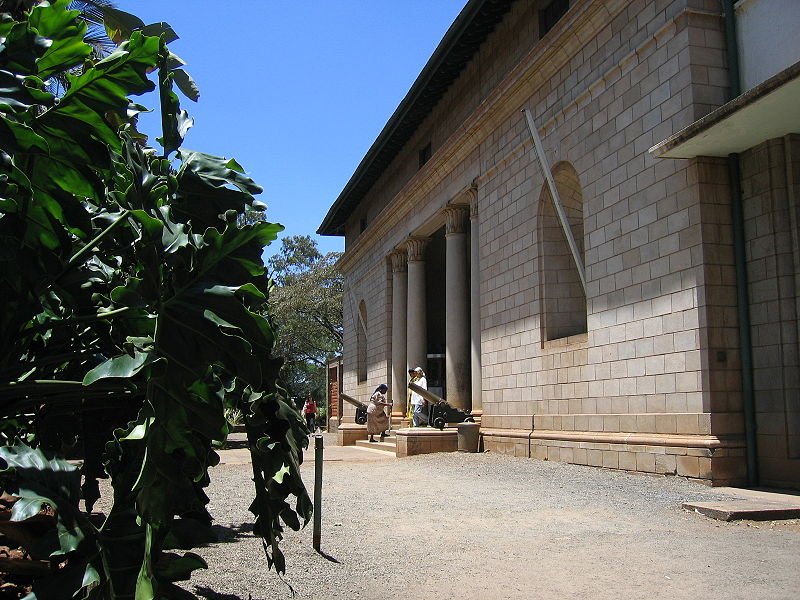 National Museum of Kenya, Nairobi
National Museum of Kenya, NairobiSource: https://commons.wikimedia.org/wiki/File:Nairobi_Museum_entrance.JPG
Author: Karl Ragnar Gjertsen

Places of Interest in Nairobi
- AFEW Giraffe Centre
Center for giraffes set up in 1983 by the African Fund for Endangered Wildlife. The mission of the center is to increase the number of Rothschild giraffes in the world. - Athi River
This is a township named after a river. It is located to the southeast of Nairobi. The main attraction here is the Maasai Ostrich Farm. - August 7th Memorial Park
Memorial occupying the former site of the US Embassy which was attacked by terrorists on 7 August 1998. - Bomas of Kenya
A living museum and cultural center, Bomas of Kenya presents 11 mock-up traditional villagers with guides explaining the way of life in each. There are traditional dance performances staged at its amphitheater. - Carnivore Restaurant
One of the best restaurants in Kenya specializing in traditional recipes served in an upscale setting. - David Sheldrick Wildlife Trust
Orphanage for lost and abandoned baby elephants set up by Dame Daphne Shelrick, widow of conservationist David Sheldrick. - Karen Blixen Museum
The farmhouse of the Danish-born author of Out of Africa. In-house guide is available to take visitors around. - Kenya's National Archives
Housed in the historic Bank of India building from 1906, the national archives displays photographs on Nairobi and its local culture. There are art pieces from the private collection of Joseph Murumbi, the former vice president of Kenya and other collectables and memorabilia on display. - Lake Magadi
104 sq km (40 sq mi) lake on the floor of the Rift Valley. This is one of the hottest and driest places in Kenya with minimal vegetation and heat haze. - Maasai Ostrich Farm
200-acre (81 ha) farm where ostriches are bred. The gift shop sells painted ostrich eggs. - Machakos
Country town to the south of Nairobi, home to the Akamba tribe who were great traders during the days of the caravan trade. - Nairobi Arboretum
An 80-acre arboretum with some 350 species of trees, this is today a popular recreational park for the people of Nairobi. - Nairobi City Market
Two-storey Art Deco building crammed full with stalls selling local fruits and vegetables. This is a good place to see the locals go about their business. - Nairobi City Park
300-acre (121-ha) public park with landscaped gardens, ponds and nursery. Laid out in 1904, this is the first recreational area in Nairobi. - Nairobi Mamba Village
Set around a manmade lake, this is a crocodile farm (mamba means crocodile in Swahili). There are 60 resident Nile crocodiles here. - Nairobi National Museum
One of the best museums in the region, the Nairobi National Museum, opened in 1929, provides an overview of the culture and natural history of the country. Exhibits range from fossils and bones to skeletons of mammals and reptiles. Also part of the museum is the Snake Park opened in 1959, exhibiting a wide variety of snakes found in Kenya. - Nairobi National Park
117-sq-km (45-sq-mi) park established in 1946 to protect Nairobi's wildlife against the encroaching city development. The park is home to numerous wildlife from buffaloes to crocodiles and hippos. - Ngong Forest Sanctuary
A verdant tract of indigenous forest that acts as the green lung for Nairobi. It is home to 120 species of birds as well as numerous species of insects and mammals. - Ngong Hills
Hills in southwestern Nairobi with four peaks. They form a border between the city and the Rift Valley, which drops 1,200 meter (3,950 ft) from the hills westwards. - Nguruman Escarpment
A 2,300-meter (7,550-ft) escarpment that rises abruptly from the Rift Valley to form its western wall. The excarpment provides scenis vistas of the Rift Valley and the river below. - Olorgasailie Prehistoric Site
Site that has yielded many prehistoric remains since 1919. Mary and Louis Leakey were involved in excavations here in the 1940s. - Railway Museum
Museum recounting the building of the Uganda Railway - often called the Lunatic Line. On display are old photographs, locomotives and coaches. - Uhuru Gardens
Public park with two memorials built for different anniversaries of Kenya's independence. The Uhuru Monument was unveiled in 1963 while the other, an abstract granite-and-black marble memorial, in 1988.
 Latest updates on Penang Travel Tips
Latest updates on Penang Travel Tips
About this website

Dear visitor, thank you so much for reading this page. My name is Timothy Tye and my hobby is to find out about places, write about them and share the information with you on this website. I have been writing this site since 5 January 2003. Originally (from 2003 until 2009, the site was called AsiaExplorers. I changed the name to Penang Travel Tips in 2009, even though I describe more than just Penang but everywhere I go (I often need to tell people that "Penang Travel Tips" is not just information about Penang, but information written in Penang), especially places in Malaysia and Singapore, and in all the years since 2003, I have described over 20,000 places.
While I try my best to provide you information as accurate as I can get it to be, I do apologize for any errors and for outdated information which I am unaware. Nevertheless, I hope that what I have described here will be useful to you.
To get to know me better, do follow me on Facebook!
Copyright © 2003-2025 Timothy Tye. All Rights Reserved.

 Go Back
Go Back